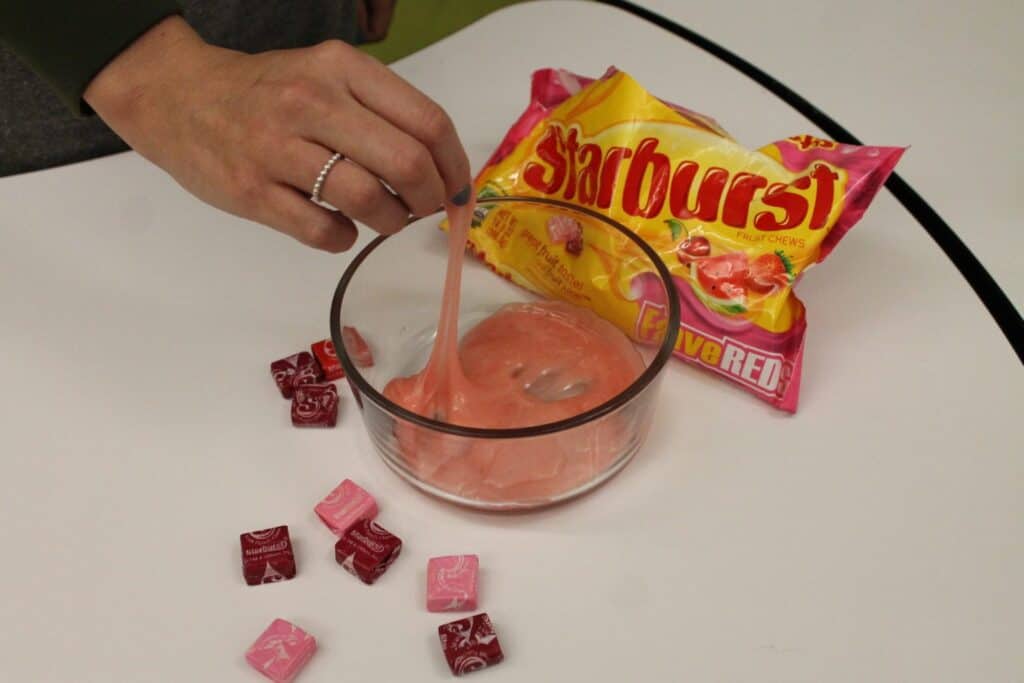DIY Science Experiments for Halloween from Glazer Children’s Museum!
Spooky science experiments are pretty much a must this time of year!
Halloween seems to be the holiday of endless sugary treats, but all these sweets your little ghouls and goblins collected while trick-or-treating can be used for more than eating.
Get ready for some Halloween science, friends! Try out these Tricks and Treats to become a mad scientist yourself!
Related: The BEST Pumpkin Patches, Halloween Events, Fall Festivals and MORE!
Spooky Halloween Science Experiments to Try this Halloween
Ghost Eggs (pictured above)
Materials: Raw eggs, a clear glass jar, tonic water, vinegar, black light
Instructions: First fill the jar with the desired amount of eggs. Then, fill the jar with equal parts of tonic water and vinegar.
Allow the eggs to be submerged for a couple of days, during this time you can make predictions and record what happens to the eggs! After a couple of days take them out of the jar, shine a black light on them for a spooky effect!
Science Behind the Experiment: The vinegar dissolves the eggshell, and leaves the egg’s membrane. The acidity in the vinegar causes the outer shell of the egg to break down, but has no dissolving effect on the membrane.
The tonic water that is absorbed into the egg’s membrane is what causes the eggs to glow under the black light!
Why we like it! It’s a fun way to talk about chemical changes and a spooky decoration to have out for Halloween!
Edible Starburst Slime
Materials: 1 bag of Starburst, powdered sugar, cornstarch
Instruction: First, mix the ¼ cup of powdered sugar with the ¼ cup of cornstarch. Then, in a pot over the stove, boil water what do we do with the water?.
Place the Starburst in a microwaveable bowl and heat in the microwave for 30 seconds; take the bowl out of the microwave and stir.
Then, heat the Starbursts for another 30 seconds and stir again. VERY CAREFULLY flip over the bowl on an area with the mixture you made with powdered sugar and cornstarch; wait five minutes for the melted Starburst to cool down!
When the blob of Starburst has cooled down, knead it into the mixture, stretching and pulling to let a lot of air into the candy. As you do this, the candy will become less sticky and will stretch more. You’ve got slime!
Tips: Have kids planning to eat the slime wash their hands. You can melt the different colors Starburst together or separate them by color; try both ways!
Why we like it! A new twist on the slime fad, and an added bonus… it’s edible!

Dancing Worms
Materials: Gummy worms, scissors, baking soda, vinegar, water, clear glass, fork
Instruction: First, cut the gummy worms into four parts. After, stir three tablespoons of baking soda into a glass of water.
Then, place the gummy worms into the glass with the baking soda mixture and let them soak for 15 minutes.
Fill a clear glass with vinegar; then, lift the worms out of the baking soda mixture and place them into the clear glass of vinegar!
Science Behind the Experiment: The vinegar and baking soda react to each other and cause carbon dioxide gas bubbles to form on the worms.
These bubbles float up through the vinegar, making the worms dance!
Why we like it! It’s a creepy-crawly way to talk about chemical reactions!
Float or Sink
Another fun experiment to do with your leftover candy is to play Float or Sink with it! Grab a handful of candy and a bowl of water! Try dropping different candy into the bowl to see if it sinks or floats! To add to the fun, make predictions and record your findings!
Why we like it! It’s a simple way to explore the properties of candy and talk about density!
For more family-friendly fun, be sure to visit Glazer Children's Museum in Downtown Tampa!


